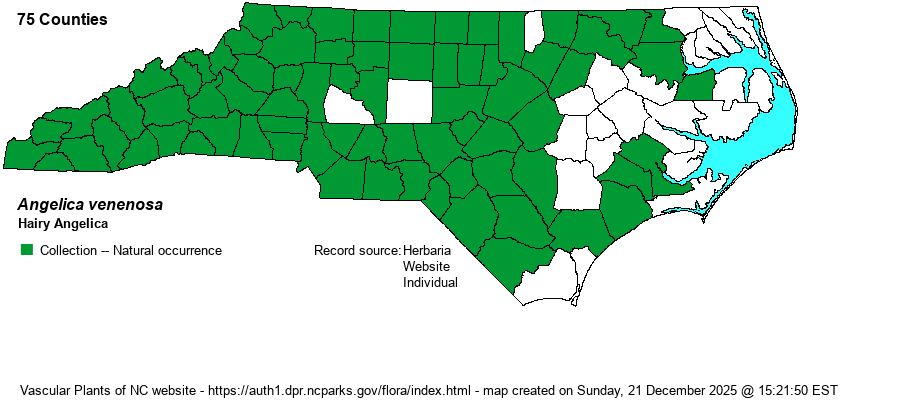| Author | (Greenway) Fernald | |
| Distribution | Throughout the Mountains and Piedmont; in the Coastal Plain found nearly throughout the western and central portions, but absent in the far eastern counties. There is a tendency for plants of the Sandhills and Coastal Plain to be smaller than those in the rest of the state; often this difference is strong. However, in 2023 Taxon Editor Sorrie attempted to apply various morphological characters but failed to find definitive distinctions in plants from the Southeast.
This is an Eastern species, found from MA and MI south to western FL and LA. | |
| Abundance | Frequent to common in the Mountains and Piedmont; infrequent to fairly common in much of the Coastal Plain, but rare to absent in the eastern portions. | |
| Habitat | This is a species of dry places, mostly over clay soil as opposed to sandy soil. It grows along dry wooded margins and roadbanks, openings in upland woods, in pine/scrub oak sandhills with loamy soils, and other similar places in partial shade. | |
| Phenology | Blooms from June to August, and fruits from July to September. | |
| Identification | This is a moderate-sized erect herb growing to about 2 feet tall on average, mostly unbranched. However, the several alternate leaves are long, bi-pinnately divided, with the leaflets up to 2 inches long and 4/5-inch wide, elliptical, with fine serrations. The leaves/leaflets appear thick and coriaceous, appropriate for a plant growing in dry places, and different in texture from most other umbel species. The inflorescence is quite broad, split into several branches with many small umbels of white flowers. The only other somewhat similar umbel species is Ligusticum canadense, but it grows on rich soil, has thin leaves and leaflets, and has more serrated leaflets. | |
| Taxonomic Comments | None
| |
| Other Common Name(s) | Deadly Angelica, Woodland Angelica | |
| State Rank | S5 | |
| Global Rank | G5 | |
| State Status | | |
| US Status | | |
| USACE-agcp | | |
| USACE-emp | | |

